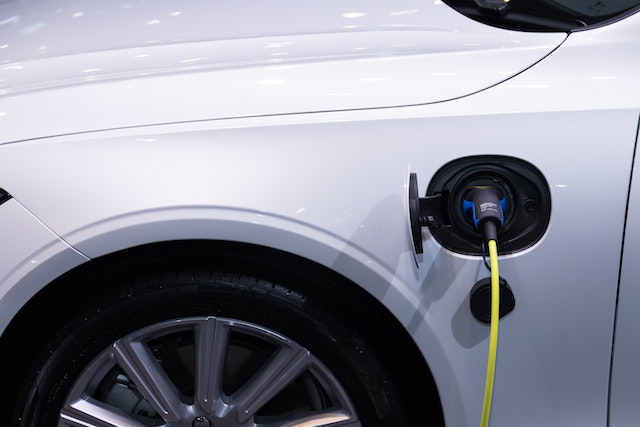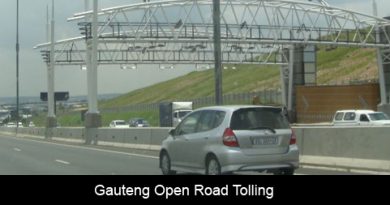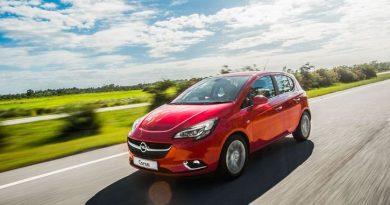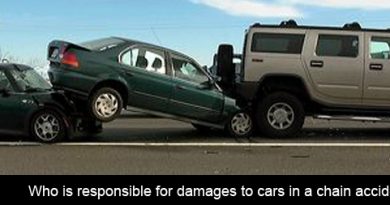State of the Automotive Sector in South Africa
naamsa presented on the current state of the automotive industry at last week’s SA Auto week. A major focus was on supporting the growth of the industrialisation of the automotive industry across Africa. Much of this focus on Electric Vehicles (EV) and supporting Africa in developing products needed for these vehicles and simultaneously making EV vehicles available to more Africans sooner.
It was noted that last November, at the COP26 Joint Declaration Statements commitment was made to the goal of achieving carbon neutrality by 2050. As carmakers in the country, all OEMS have collectively internalised the importance of working together with the government, other organisations and other social and business partners in achieving this goal. The sector remains committed to working diligently to contribute to the support of this objective.
Yet, within recognising this, South Africa is also aware that this cannot be done alone. The automotive industry recognises that no single government policy or industry commitment alone will achieve this “ambitious” goal. For this reason, the industry is combining forces to assist in working with the government and with other economic sectors to identify the range of approaches necessary to establish sustainable pathways to carbon neutrality across the state.
It starts by reimagining the future together. This includes investing in new energy vehicles, and infrastructure to set the scene. In Africa specifically, this needs to include actively and responsibly promoting, advancing and protecting the interests of our continent, including the manufacturers of light passenger and heavy commercial vehicles as well as major importers and distributors of new vehicles from within Africa.
South Africa’s leadership in this sphere aims to do this by becoming the most credible and respected thought leader and partner in a globally competitive and transformed automotive market that actively contributes to sustainable development. It’s against this backdrop that steps have already been taken to convene vital role-players and create a platform for engagement about the future of the industry.
The automotive sector is a fundamental component of our modern economy and society. Vehicles are regarded as productive assets and essential capital that influence the economy. The world is dependent on the transport industry and its passengers. In South Africa alone, the industry makes a huge social economic contribution in our country’s economy and has grown to become the leading manufacturing sector.
Yet, naamsa is aware in order for South Africa, and most other African countries, assuming a vital role in the electric market cannot be done alone. Foreign direct investment is critical to preparing growth and creating jobs. Fortunately, the automotive industry continues to remain one of the most viable sectors receiving foreign investments.
naamsa acknowledges that this progress comes on the back of a very challenging time. It has been characterised by a number of adverse events with severe consequences to the entire value chain, including the global shortage of semiconductors, persistent supply chain disruptions and the invasion of Ukraine by Russian forces. South Africa’s power supply challenges will continue to impact the sector. Despite these challenges, naamsa says South Africa retained many of its manufacturing jobs and companies have survived but we need to continue focusing on stability.
Recovery from the effects of COVID-19 has been consistent with steady increases every quarter since last year. The employment of women and youth has also improved every quarter. OEMs have also made considerable improvements to BEEE levels. naamsa is celebrating these achievements but with a recognition that there is a long way to go.
The gross output of the manufacturing sector decreased by 3.2% in the second quarter of this year while the automotive industry output was still more than 7%. Total manufacturing production orders rose by 5.2%. Power outages continue to impact industrial productivity in general. During much of September 2022, there has been a steady increase, in line with developments in most of the world.
Challenges aside, the journey toward new energy level evolution continues and the urgency to move at an accelerated pace grows. The past two years, industries have committed to propelling this movement. As critical next moves, we are proposing pragmatic steps to achieve this. According to the scientific and national greenhouse gas industry, transport was identified as the fastest-growing source of greenhouse gas emissions.
naamsa acknowledges that evolution is necessary. Decisions have been taken by some of South Africa’s biggest export customers and the deadlines were announced. Thus, while local adoption remains low, we need to stimulate demand, innovate and prioritise focus areas.
It is important to socialise new EV technologies among local customs. naamsa is under no illusion that Africa will take more time but this should not make us complacent in increasing speed of adoption. Policy support remains a critical factor in mapping a way forward. The slow pace that we we have been prioritising policy reforms remains a concern as an industry. The Green Paper discussion document released last year May has yet to be finalised into a white paper.
All critical investment schemes can be strengthened to intentionally support new energy vehicle value training investments. Change, however, requires concessions: Fiscal duty on components should be loaded which industry and government should work together on; because of the absence of local capability, electric vehicle components should be given recognition too; agreement on a sunset period to allow the industry to develop capability and revert back to local and a movement to the local supply of battery technology for continental demand.
In particular, locally engineering the technology will improve the goals of the industry for locals. Our country is desperate for new jobs due to unemployment challenges, particularly among young people. naamsa says we need to think differently, we need to act quickly, e want to use the auto sector as a catalyst for industrialisation.
Another consideration is that Africa, particularly Southern Africa, is endowed with enormous mineral resources. These are needed for that technology and we need to be attractive to global and local battery centres. We need to include a beneficiation strategy so that we develop our own mega-factories that supply products to the world.
Examples include Zimbabwe with 70% of the world’s manganese reserves, the DRC with 60% of cobalt supply of which 85% is exported to China, graphite supplies in Zambia, Zimbabwe, Libya and South Africa, and Tanzania has copper reserves. Earlier this year, opportunities were discussed and recently promising discussions were also had.
Transportation systems need improvement for these plans to work. Another challenge that needs to be resolved is service provision across ports. Rail networks have been slow which is exacerbated by longstanding issues. Road carriers for import and export are also sporadically affected by protests and access due to high traffic volumes. naamsa is looking at mitigating strategies to improve rail performance, ideally to 90 to 95%.
Another focus, high-level content produced in South Africa has not been achieved. Shipments to any other country represents an opportunity for significant localisation. It is imperative we capitalise on this by continuing to proactively work closer with government.
naamsa notes that at the centre of it, too, is a vicious ambition to drive industry transformation at all levels and introducing critical deadlines. This similar expectation is on our supply chain by the end of 2023. We need to work smarter with all our suppliers and supporting them to reach greater levels of compliance as well. Plans to do this should result in an increase of 88% and supply chain performance to reach 80%.
According to naamsa there have been unnecessary delays and they would like to implore the authorities to swiftly get back on track to expedite the process. They hope to preserve as much of the local content as possible. South Africa has a strong baseline data to work from and our future reports will be enhanced because we’re in a position to compare and track our progress into the future.
There is a future to look forward to in the EV market as long as the country can iron out these issues. Until then, there is much work to be done.




